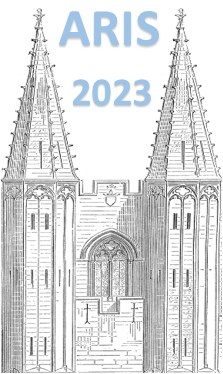Orateur
Description
The intentional incorporation of foreign atoms in semiconductors, with the aim to realize new and/or novel functionalities with potential applications in optoelectronic and spintronic devices, gives rise to structural changes that profoundly affect their electronic, magnetic, and optical properties. Consequently, information on material properties and on dynamic processes such as dopants diffusion and relaxation processes are necessary and can be determined using a wide variety of techniques. Of particular importance are techniques employing radioactive isotopes implanted in materials as probes as they combine a two-fold function: (a) material modification and (b) material characterization at the atomic level. The latter is achieved through utilizing the isotopes mainly as “spies” via the radiation/particles they emit in their decay. This provides knowledge on lattice sites of desired daughter dopants, lattice location changes with thermal annealing, and the defects/complexes formed with host atoms.
Mössbauer Spectroscopy (MS) is a very sensitive technique capable of detecting minor shifts in energy levels that emanate from hyperfine interactions between the nuclear moments of the probe/dopant and any local electric and magnetic fields in their immediate environment. A novel extension is emission Mössbauer Spectroscopy (eMS) employing short-lived radioactive isotopes developed at ISOLDE, CERN. eMS studies have been undertaken mainly using $^{57}$Mn$^{*}$ ($t_{1/2}$ = 1.5 min) which is produced via proton-induced fission in a UC$_{2}$ target followed by multistage laser ionization[1], mass separation and acceleration to 40-60 keV. In addition, other precursor isotopes such as $^{57}$Co$^{*}$ ($t_{1/2}$ = 272 days) and $^{119}$In$^{*}$ ($t_{1/2}$ = 2.4 min) have also been applied for offline $^{57}$Fe studies and for online $^{119}$Sn measurements, respectively.
Over the years, eMS has been applied in several different material systems at ISOLDE, with investigations initially on the role of Fe in silicon to recent studies on the nature and origin of magnetic effects observed in transition metal doped semiconductors[2-5] envisaged for spintronic applications. Special features of the technique will be presented and discussed, together with representative results in binary[4] and ternary III-nitrides. The results will mainly focus on investigations of the lattice sites of the probes, their charge and spin states, and the magnetic interactions of dopants in ternary-nitrides (virgin and Mn pre-doped)[6] and metal halides[7].
[1] Fedoseyev et al., Nucl. Instrum. Meth. B, 126 (1997) 88.
[2] Gunnlaugsson et al., Appl. Phys. Lett. 97 (2010) 142501.
[3] Mølholt et al., Phys. Scr. T148 (2012) 014006.
[4] Masenda et al. J. Magn. Magn. Mater. 401 (2016)1130.
[5] Mantovan et al. Adv. Electron. Mater. 1 (2015) 1400039.
[6] Masenda et al. New J. Phys. 24 (2022) 103007.
[7] Gunnlaugsson et al., Phys. Rev. B 106 (2022) 174108.

